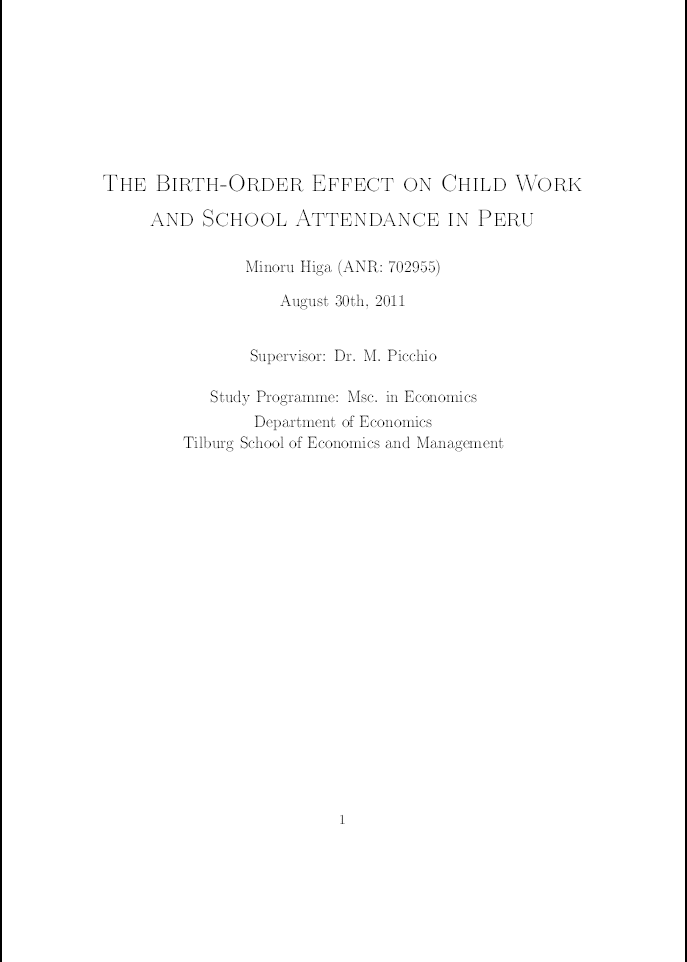The Birth-Order Effect on Child Work and School Attendance in Peru
Abstract
In this paper, we investigate the potential birth order effect on child work and school attendance using data for Peru and a bivariate probit model. Our findings suggest that (i) parents usually send their later-born kids to school and their earlier-born children to perform either productive or domestic work. These results are robust across different model specifications and sample restriction. (ii) There are differences between sons and daughters and di erence across area of residence only for females. (iii) Birth order effects turn out to be nonlinear for urban and rural boys. (iv) Birth order e ects are sharpen by the number of younger sisters and younger brothers, on the one hand, and by the average birth spacing, on the other hand. (v) There is no trade-o between domestic work and schooling, but there is a trade-o ff between working and schooling except for rural girls. Finally, results also indicate that the econometric approach applied in this paper is suitable for modelling child work and school attendance for boys and girls in urban areas. However, in rural areas, it seems to be appropiate only for modelling child participation in productive work and schooling.

